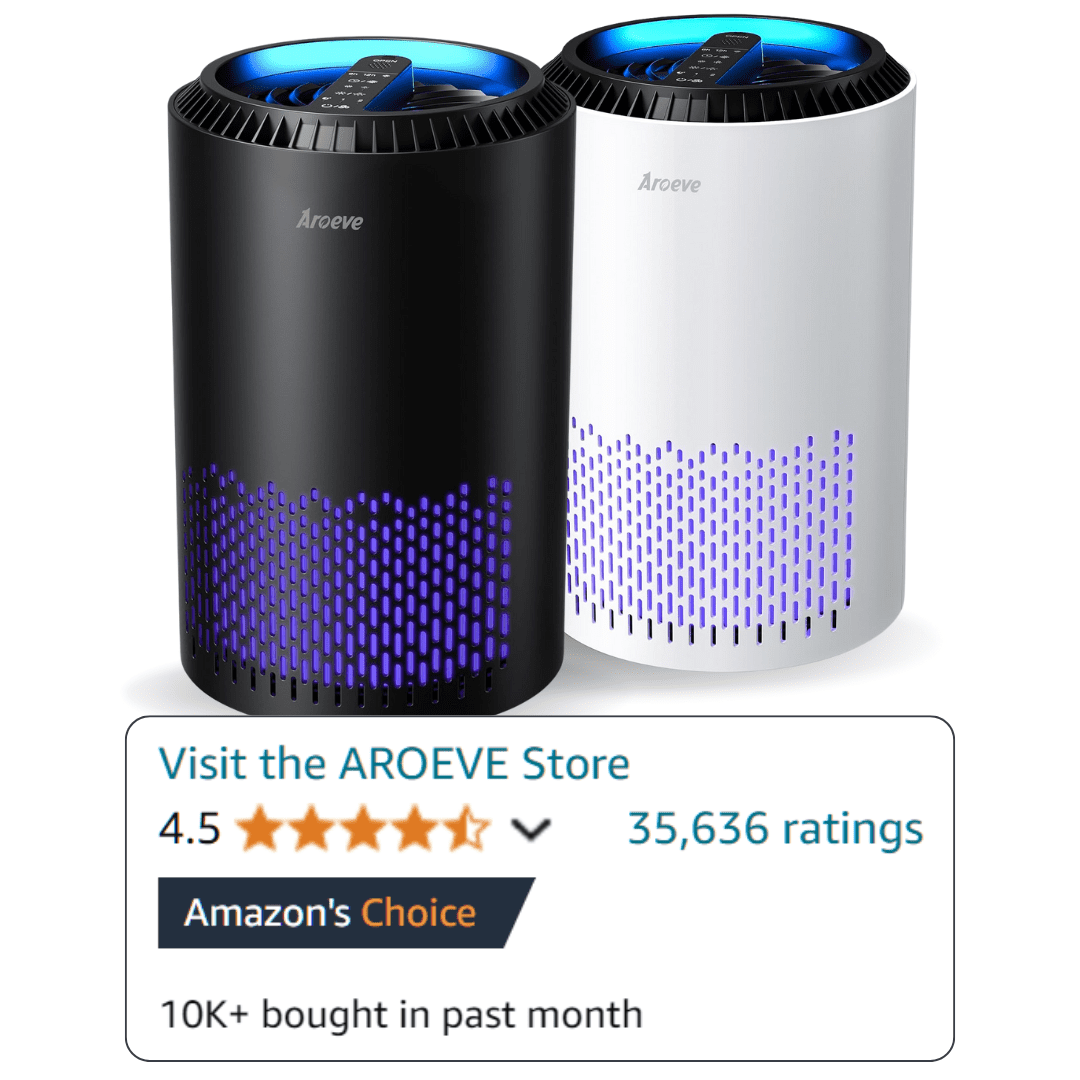Why Classroom Air Quality Monitoring Matters
Health Benefits for Students and Teachers
Indoor air quality (IAQ) in classrooms directly affects student and teacher health. Poor IAQ can trigger asthma, allergies, and respiratory issues. The EPA’s Tools for Schools program highlights that children are more vulnerable to pollutants due to their developing lungs and higher breathing rates. Teachers exposed to high CO2 or particulate matter (PM2.5) often report headaches and fatigue. Schools that monitor and improve IAQ see fewer sick days and better overall wellness.
Impact on Learning and Cognitive Function
Research from the Harvard T.H. Chan School of Public Health shows that high CO2 and PM2.5 levels reduce cognitive performance. Even moderate increases in CO2 (above 1,000 ppm) can slow reaction times and lower test scores. Classrooms with good ventilation and IAQ monitoring consistently outperform those without. Monitoring helps schools maintain healthy CO2 thresholds and supports student focus and memory.
COVID-19 and Airborne Disease Prevention
COVID-19 and other airborne diseases spread more easily in poorly ventilated spaces. ASHRAE Standard 62.1 and the American Lung Association recommend continuous IAQ monitoring to ensure adequate ventilation. CO2 sensors act as proxies for ventilation effectiveness, while PM2.5 and VOC sensors help identify other risks. Schools using IAQ monitors can quickly spot ventilation problems and take action, reducing transmission risk.
Key Features to Look for in Classroom IAQ Monitors
Pollutant Detection Capabilities (CO2, VOCs, PM2.5, etc.)
A quality classroom IAQ monitor should track CO2, PM2.5, VOCs, temperature, and humidity. Some advanced models also measure formaldehyde and radon. The EPA and NIH recommend focusing on CO2 (ventilation), PM2.5 (respirable particles), and VOCs (chemical off-gassing). Monitors that detect multiple pollutants provide a more complete picture of classroom air quality.
Data Logging and Reporting Functions
Look for monitors with built-in data logging and easy-to-read reports. Data history helps schools identify trends and spot recurring problems. Many monitors offer downloadable reports or cloud dashboards. This is essential for compliance with school IAQ management plans and for sharing results with parents and staff. Some systems can send automated alerts when readings exceed healthy CO2 thresholds.
Connectivity Options (WiFi, Bluetooth, Cloud)
Modern IAQ monitors often connect via WiFi or Bluetooth. Cloud-based systems allow remote access to real-time data and historical trends. This is especially useful for district-wide monitoring or for facilities managers overseeing multiple classrooms. Some monitors integrate with building management systems or HVAC controls, making it easier to automate responses to poor air quality.
Ease of Use for Educators
Teachers need monitors that are simple to operate and interpret. The best classroom IAQ monitors use color-coded displays or dashboard interfaces. Green, yellow, and red indicators show air quality status at a glance. Many models include companion apps with explanations and recommendations, making it easy for non-technical users to take action.
Top 7 IAQ Monitors for Educational Settings
Best Overall: AirVisual Pro
The AirVisual Pro measures CO2, PM2.5, temperature, and humidity. It features a clear display, WiFi connectivity, and cloud data access. Schools can set custom alerts and download reports for compliance. The device is portable and easy to calibrate, making it a top choice for most classrooms.
Best Budget Option: Temtop M2000
The Temtop M2000 offers reliable CO2 and PM2.5 monitoring at a lower price point. It has a simple interface and stores up to 30 days of data. While it lacks cloud features, it’s ideal for schools needing basic monitoring in multiple rooms.
Best for Elementary Classrooms: uHoo
uHoo monitors nine IAQ parameters, including CO2, PM2.5, VOCs, and temperature. Its app provides clear explanations and actionable tips, which is helpful for teachers and younger students. The device is compact and blends into classroom environments.
Best for Multiple Classroom Monitoring: Kaiterra Sensedge Mini
The Sensedge Mini is designed for networked monitoring across many rooms. It connects to a central dashboard, making it easy for facilities managers to track IAQ in real time. The system supports custom alerts and integrates with HVAC controls.
Best for HVAC Integration: Awair Omni
Awair Omni connects directly to building management systems and HVAC controls. It measures CO2, PM2.5, VOCs, and more. The device supports automated ventilation adjustments and provides detailed compliance reports for school administrators.
Best Portable Option: IQAir AirVisual Outdoor
This portable monitor is ideal for temporary classrooms or field trips. It tracks CO2, PM2.5, and weather data. The device is battery-powered and syncs with a mobile app for instant readings.
Best Advanced Features: TSI AirAssure
TSI AirAssure offers advanced analytics, including trend forecasting and anomaly detection. It supports multiple pollutant sensors and provides detailed reports for compliance with ASHRAE and EPA guidelines. The system is scalable for district-wide deployment.
Implementation Guide for Schools
Placement Recommendations
Place IAQ monitors at breathing height, away from windows, doors, and direct airflow from vents. Avoid corners and areas near electronics that may emit heat. For large classrooms, consider multiple monitors or a main unit with satellite sensors. Refer to the EPA’s Tools for Schools for detailed placement guidance.
Setting Up Alerts and Thresholds
Configure alerts for CO2 above 1,000 ppm, PM2.5 above 12 µg/m³, and VOCs above 0.5 ppm. Use manufacturer recommendations and local health guidelines. Set up email or app notifications for facilities staff and teachers. Regularly review and adjust thresholds based on seasonal changes and occupancy.
Interpreting IAQ Data
Train teachers and staff to read monitor displays and dashboards. Use color-coded indicators and simple explanations. Provide quick reference guides for interpreting readings. Encourage staff to log incidents of poor air quality and report them to facilities management.
Taking Action on Poor Air Quality Readings
When monitors indicate poor air quality, open windows and doors if possible. Increase mechanical ventilation or run air purifiers. Check HVAC filters and schedule maintenance if readings remain high. Document actions taken and monitor for improvement. For persistent issues, consult with an IAQ specialist or refer to the school’s IAQ management plan.
Funding Options for Classroom IAQ Equipment
Federal and State Grants
Many schools qualify for federal and state grants to fund IAQ improvements. The EPA and Department of Education offer programs for air quality monitoring and ventilation upgrades. Check for local grants targeting healthy schools and COVID-19 mitigation.
PTA/PTO Fundraising
Parent-teacher organizations can raise funds for IAQ monitors through events, donations, or crowdfunding. Highlight the health and learning benefits to encourage community support. Share success stories from other schools to build momentum.
School District Budgeting
Include IAQ monitoring in annual facilities budgets. Present data on absenteeism reduction and improved test scores to justify investment. Work with district administrators to prioritize IAQ as part of overall school safety and wellness initiatives.
Case Studies: Schools Improving IAQ
Elementary School Success Story
A California elementary school installed CO2 and PM2.5 monitors in every classroom. Within three months, they identified several rooms with poor ventilation. After adjusting HVAC settings and adding portable air purifiers, student absenteeism dropped by 15 percent. Teachers reported fewer headaches and better classroom focus.
District-Wide Implementation Example
A Texas school district deployed networked IAQ monitors across 20 schools. Facilities managers used a central dashboard to track air quality and respond to alerts. The district integrated IAQ data with HVAC controls, automating ventilation adjustments. Over one year, the district saw a measurable improvement in test scores and a reduction in respiratory complaints.
FAQ
How much do classroom IAQ monitors typically cost?
Classroom IAQ monitors range from $100-$500 for basic models to $500-$2,000 for advanced systems with multiple sensors and networking. Many schools qualify for educational discounts or grant funding.
How many IAQ monitors does a typical classroom need?
Most classrooms (500-1,000 sq ft) need one centrally placed monitor. Larger rooms or those with unusual airflow may need multiple units or a main unit with satellite sensors.
Do IAQ monitors require professional installation?
Most modern classroom IAQ monitors are designed for easy setup without professional installation. Systems that integrate with HVAC controls may require help from facilities staff or HVAC professionals.
How often should IAQ monitors be calibrated?
Most quality IAQ monitors need calibration every 6-12 months. Some advanced models self-calibrate, while others may need to be returned to the manufacturer or calibrated on-site.
Can IAQ monitors help with COVID-19 prevention?
IAQ monitors do not detect viruses directly, but CO2 sensors indicate ventilation adequacy, which is key for reducing airborne transmission. Some advanced monitors track ventilation rates and air exchange.
What IAQ parameters are most important for classrooms?
The most critical parameters are CO2, PM2.5, temperature, humidity, and VOCs. Some schools also monitor formaldehyde and radon in specific regions.
How can teachers interpret IAQ data without technical expertise?
Most classroom monitors use color-coded displays or dashboards. Green/yellow/red indicators provide at-a-glance status, and companion apps include explanations and recommendations.
Are there privacy concerns with networked IAQ monitors?
School-grade IAQ monitors typically do not collect personal data. Administrators should review data storage policies, especially for cloud-connected devices, and ensure compliance with school privacy requirements.
Where can I find more information on healthy CO2 thresholds?
See the ASHRAE homepage and the EPA Tools for Schools for detailed guidelines.
How do IAQ monitors fit into a comprehensive air quality strategy?
IAQ monitors are a key part of a comprehensive air quality strategy and should be used alongside ventilation improvements and air purifiers.



